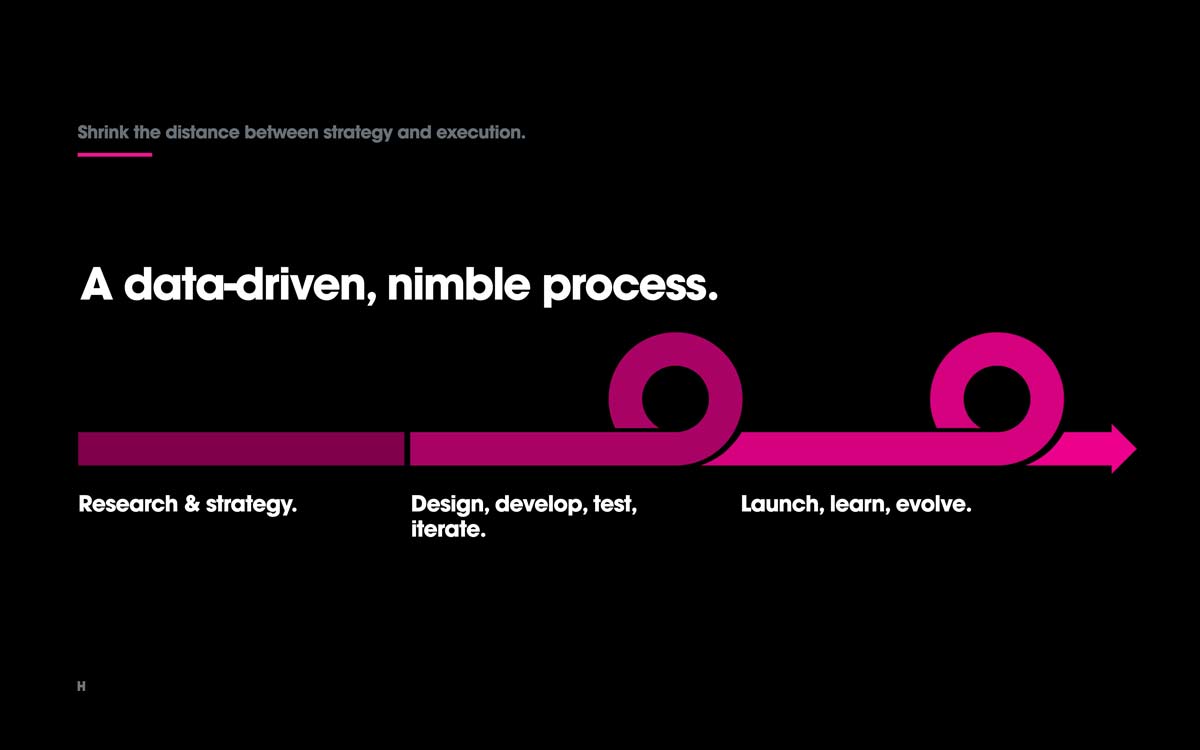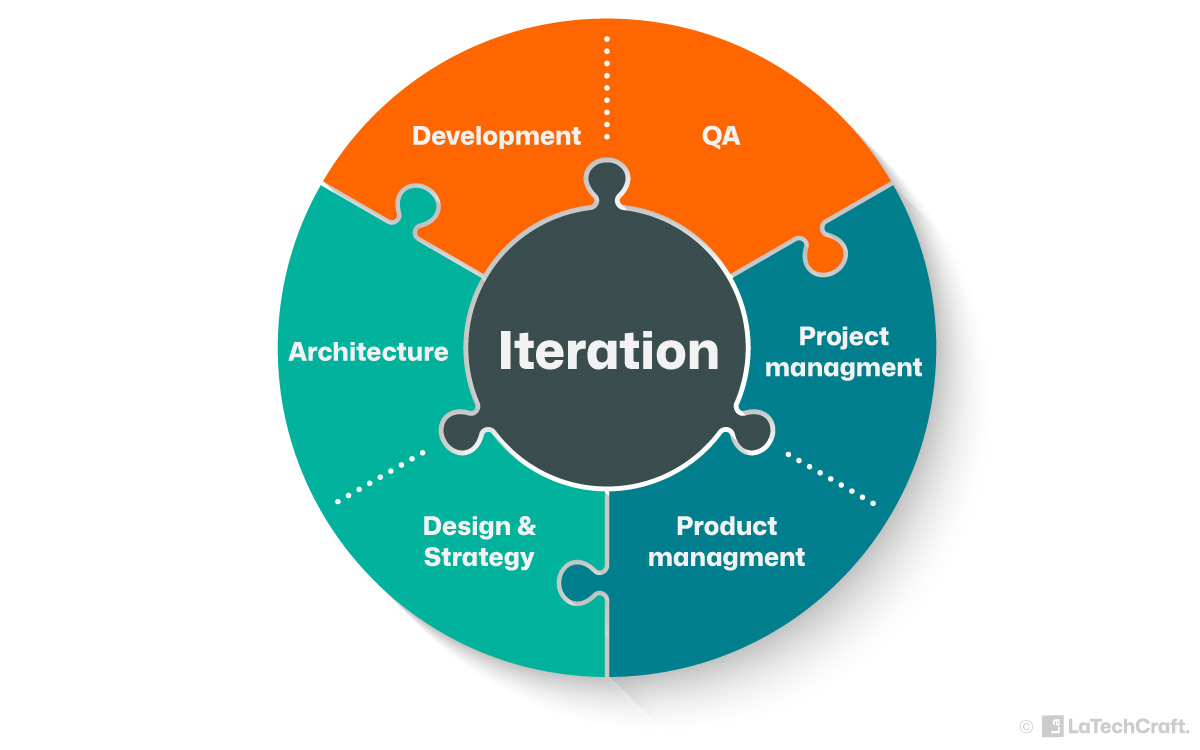
A Comprehensive Guide to Agile Software Development Methodologies.
by Khoa Nguyen
In today's constantly evolving world of software development, it's essential for teams to embrace a methodology that allows for flexibility and adaptability. Agile software development methodologies provide just that. By prioritizing collaboration, continuous improvement, and iterative development, Agile methodologies foster efficiency and ensure that teams can easily respond to changing requirements and customer needs. In this comprehensive guide, we will explore the world of Agile software development, understand its values, delve into different methodologies, and uncover the pros and cons of adopting Agile practices.
Understanding Agile Software Development.
Before diving into the specific Agile methodologies, it's crucial to grasp the core concepts and principles that underpin Agile software development. Agile is a mindset, a way of thinking and working that emphasizes communication, collaboration, and adaptability. At its core, Agile values individuals and interactions over processes and tools, working software over comprehensive documentation, customer collaboration over contract negotiation, and responding to change over following a plan.
Agile software development is a dynamic and flexible approach that has revolutionized the way software is created and delivered. It is a departure from traditional waterfall methods, where projects are planned and executed in a linear fashion. Instead, Agile embraces change and uncertainty, recognizing that requirements and priorities can evolve throughout the development process.
Agile methodologies are designed to empower teams to respond to change quickly and effectively. By breaking down projects into smaller, manageable chunks, Agile allows for continuous feedback and adaptation. This iterative and incremental approach ensures that software is developed in a way that aligns with the evolving needs of the stakeholders.
Exploring the Agile Software Development Cycle.
One of the key characteristics of Agile methodologies is their iterative and incremental nature. Agile development follows a cyclical process, consisting of planning, executing, reviewing, and adapting. This approach allows teams to break down projects into smaller, manageable chunks, ensuring that the development process remains flexible and that feedback can be incorporated early and often.
The Agile software development cycle typically begins with project planning, where the team collaboratively defines the goals, scope, and priorities of the project. This is followed by the execution phase, where the team works on developing and delivering the software incrementally. Regular reviews and retrospectives are conducted to evaluate progress, gather feedback, and identify areas for improvement.
Agile methodologies encourage continuous adaptation and learning. Based on the feedback received, the team can make necessary adjustments to the project plan, refine requirements, and reprioritize tasks. This iterative approach ensures that the software being developed remains aligned with the evolving needs of the stakeholders and delivers maximum value.
In conclusion, Agile software development is a flexible and collaborative approach that empowers teams to deliver high-quality software in a rapidly changing environment. By embracing the core principles of Agile and selecting the most suitable methodology, teams can effectively navigate the complexities of software development and create products that meet the needs of their customers.
Embracing the Values of Agile.
Before delving into the specific methodologies, it's important to understand the core values that Agile software development is built upon. These values shape the way teams work and guide the decision-making process throughout the development journey.
Agile software development is not just about following a set of methodologies, but rather, it is a mindset that encourages collaboration, adaptability, and continuous improvement. By embracing these values, teams can create a dynamic and efficient development environment.
One of the core principles of Agile software development is customer collaboration. Unlike traditional development approaches, Agile emphasizes the importance of involving the customer throughout the entire development process. This collaboration allows for a better understanding of the customer's needs and preferences, leading to a product that truly meets their expectations.
Another key principle of Agile is the ability to respond to change. In today's fast-paced and ever-changing business landscape, it is crucial for software development teams to be flexible and adaptable. Agile methodologies provide a framework that enables teams to quickly respond to changes in requirements, technology, or market conditions.
Continuous improvement is also a fundamental principle of Agile software development. Agile teams strive to constantly enhance their processes, tools, and skills. By regularly reflecting on their work and seeking feedback, teams can identify areas for improvement and implement changes that lead to greater efficiency and quality.
Lastly, Agile emphasizes the importance of delivering value early and frequently. Rather than waiting until the end of a long development cycle to deliver a product, Agile teams aim to provide incremental value to the customer throughout the development process. This approach allows for early feedback, reduces the risk of building a product that does not meet customer expectations, and enables teams to quickly adapt based on customer feedback.

By embracing these core principles, Agile software development teams can create a culture of agility that fosters innovation, productivity, and ultimately, customer satisfaction. The values of Agile are not just limited to software development, but can also be applied to other areas of business and project management.
Exploring Different Agile Methodologies.
Now that we have a solid understanding of Agile's foundations, let's delve into the specifics of different Agile methodologies. Kanban, Scrum and Lean offer various approaches to collaboration, project management, and delivery. By comparing these methodologies, teams can choose the one (or create own flavour) that best aligns with their goals and workflow. Please note, this paragraph is subjective and based on author knowledge experience.
Kanban, popular Agile methodology, focuses on visualizing work, limiting work in progress, and continuous delivery. Originating from the manufacturing industry, Kanban uses a visual board with columns representing different stages of work. Each work item, represented by a card, moves across the board as it progresses. The goal is to optimize flow and minimize bottlenecks. Kanban promotes a pull-based system, where work is pulled into the next stage only when there is capacity.
Lean software development, inspired by lean manufacturing principles, promotes eliminating waste, amplifying learning, and empowering the team. Lean emphasizes delivering value to the customer as quickly as possible. It encourages continuous improvement and focuses on reducing non-value-added activities. Lean principles include identifying and eliminating different types of waste, such as overproduction, waiting, and defects. By adopting Lean practices, teams can streamline their processes and increase efficiency.
Scrum, one of the most widely used Agile methodologies, emphasises teamwork, iterative development, and regular feedback. It is based on the principles of transparency, inspection, and adaptation. In Scrum, the team works in short iterations called sprints, typically lasting two to four weeks. During each sprint, the team collaborates to deliver a potentially shippable product increment. Daily stand-up meetings, sprint planning, sprint review, and retrospective sessions are key components of Scrum. Author has decided to list Scrum last, as its implementation is very often not Agile at all. Scrum is very often misused especially by large corporations trying to keep the traditional, hierarchical management style.
By understanding the unique characteristics of each methodology, teams can make an informed decision about which Agile approach to adopt. Factors such as the nature of the project, team size, customer involvement, and organizational culture should be considered. It is also worth noting that hybrid, in-house create approaches combining elements from different methodologies, are becoming increasingly popular. Ultimately, the goal is to choose the methodology that best suits the team's needs and enables them to deliver high-quality products in a timely manner.
Comparing Scrum, Kanban, and Lean.
Scrum, Kanban, and Lean are three distinct Agile methodologies, each with its own strengths and areas of focus. While Scrum emphasizes teamwork, iterative development, and regular feedback, Kanban focuses on visualizing work, limiting work in progress, and continuous delivery. Lean software development, on the other hand, promotes eliminating waste, amplifying learning, and empowering the team. By comparing these methodologies, teams can gain a deeper understanding of their unique characteristics and determine which one aligns best with their goals and workflow.
Pros and Cons of Agile Software Development.
Like any software development approach, Agile methodologies come with their own set of advantages and challenges. It's crucial for teams to evaluate these pros and cons to determine whether Agile is the right fit for their projects and organization.
Benefits and Challenges of Adopting Agile Practices.
The benefits of Agile software development cannot be overstated. Faster time to market, increased collaboration, improved quality, and enhanced customer satisfaction are just a few of the advantages. Agile methodologies promote a more iterative and flexible approach to development, allowing teams to quickly adapt to changing requirements and deliver value to customers in shorter cycles.
One of the key benefits of Agile is its ability to accelerate the time to market. By breaking down the project into smaller, manageable chunks called sprints, teams can deliver working software at a much faster pace. This not only allows organizations to respond to market demands more effectively but also enables them to gather feedback early on and make necessary adjustments to meet customer needs.
Another advantage of Agile is its emphasis on collaboration. Agile teams work closely together, fostering a sense of shared responsibility and ownership. This collaborative environment encourages knowledge sharing, cross-functional communication, and collective problem-solving. By leveraging the diverse skills and expertise of team members, Agile development promotes innovation and creativity.
In addition to faster time to market and increased collaboration, Agile methodologies also contribute to improved software quality. Through continuous integration, automated testing, and regular feedback loops, Agile teams can identify and address issues early in the development process. This proactive approach to quality assurance helps minimize defects and ensures that the final product meets the highest standards of performance and reliability.
However, Agile methodologies also present challenges that teams need to address. One of the main challenges is the need for self-organization. Agile teams are expected to be self-managing and self-directed, which requires individuals to take ownership of their work and make decisions collectively. This level of autonomy can be empowering but also requires a high degree of discipline, accountability, and effective time management.
Effective communication is another challenge in Agile software development. With frequent iterations and continuous feedback, clear and timely communication becomes vital. Team members need to be able to express their ideas, concerns, and progress effectively to ensure that everyone is aligned and working towards the same goals. This requires active listening, open dialogue, and the use of appropriate communication tools and techniques. Again, this is quite often a challenge for large corporations, where the traditional, hierarchical management style is still prevalent.
Managing customer expectations (internal or external) is yet another challenge in Agile. Agile methodologies prioritize delivering value to the customer early and frequently. However, this can sometimes lead to a mismatch between the customer's expectations and the actual deliverables. To address this challenge, Agile teams need to establish a strong feedback loop with the customer, regularly communicate progress, and manage expectations through transparent and collaborative decision-making.
By weighing these factors, teams can navigate the Agile landscape successfully. It's important to assess the specific needs and goals of the project, the capabilities and dynamics of the team, and the organizational context before adopting Agile practices. With careful consideration and effective implementation, Agile software development can bring significant benefits and help organizations stay competitive in today's fast-paced and ever-changing digital landscape.

The 12 Principles of Agile.
In addition to the core principles, Agile also adheres to a set of 12 guiding principles outlined in the Agile Manifesto. These principles serve as a compass, guiding teams towards agility and successful project delivery. From embracing change to promoting simplicity and reflecting and adjusting, these principles provide teams with a roadmap for Agile software development. Author honestly believes that these principles should be the answers to any doubts you might have while implementing Agile.
- Our highest priority is to satisfy the customer through early and continuous delivery of valuable software.
- Welcome changing requirements, even late in development. Agile processes harness change for the customer’s competitive advantage.
- Deliver working software frequently, from a couple of weeks to a couple of months, with a preference to the shorter timescale.
- Business people and developers must work together daily throughout the project.
- Build projects around motivated individuals. Give them the environment and support they need, and trust them to get the job done.
- The most efficient and effective method of conveying information to and within a devel- opment team is face-to-face conversation.
- Working software is the primary measure of progress.
- Agile processes promote sustainable development. The sponsors, developers, and users should be able to maintain a constant pace indefinitely.
- Continuous attention to technical excellence and good design enhances agility.
- Simplicity – the art of maximizing the amount of work not done – is essential.
- The best architectures, requirements, and designs emerge from self-organizing teams.
- At regular intervals, the team reflects on how to become more effective, then tunes and adjusts its behavior accordingly.
©The Agile Manifesto Authors. This declaration may be freely copied in any form, but only in its entirety through this notice.
As software development continues to evolve, embracing Agile methodologies has become a necessity rather than an option. By applying the values, principles, and practices of Agile, teams can adapt to changing requirements, optimize collaboration, and deliver high-quality software that meets the needs of their customers. Whether you choose Scrum, Kanban, Lean, or another Agile methodology, embracing Agility is a step towards success in today's competitive software development landscape.
Disclaimer:
The information provided in this blog post by LaTechCraft is for educational purposes only. This post was written by Author and improved by Artificial Intelligence (AI), finally reviewed by experts.
Sources:
1. "Clean Agile: Back to Basics" a book by Robert C. Martin
2. https://www.techtarget.com/searchsoftwarequality/definition/agile-software-development
3. https://www.spiceworks.com/tech/devops/articles/what-is-agile-software-development/
Khoa Nguyen, a tech leader with a passion for modern management, brings his expertise in computer science (MSc) and his experience as a lead engineer to the table. He's not just about writing code; he's also driven by optimizing workflows and building high-performing teams through innovative management techniques and agile methodologies.
Think of Khoa as a translator, fluent in both the language of technology and the art of effective leadership. He's your guide to unlocking the full potential of your tech teams through practices that boost efficiency, foster collaboration, and drive results.

Tech lead